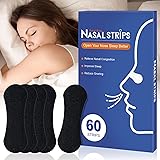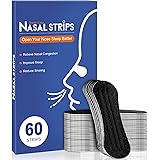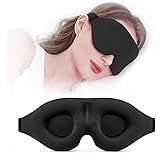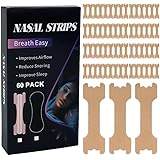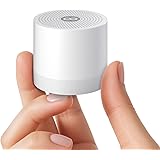Navigating the Sleep Landscape: Memory Foam vs. Hybrid Mattresses Unpacked
There was a time when choosing a mattress was a straightforward affair, often dictated by what was available at the local furniture store. Fast forward to today, and the options can feel overwhelming, especially when confronted with the myriad of choices beyond traditional innerspring models. If you’ve just watched the insightful video above from Marten Carlson at Mattress Clarity, you’ve already taken an excellent first step in deciphering the core differences between a **memory foam mattress** and a **hybrid mattress**. This article aims to build upon that foundation, delving deeper into the intricate characteristics, technological nuances, and specific benefits that define these two popular sleep solutions, helping you pinpoint which might be the optimal choice for your personal sleep sanctuary.
Deconstructing the Core: What Lies Beneath the Covers?
To truly understand the performance distinctions between a memory foam and a hybrid mattress, a granular examination of their construction is often warranted. Despite superficial similarities in their top comfort layers, their foundational engineering sets them distinctly apart.
The Allure of Memory Foam: A Deep Dive into Viscoelasticity
At its heart, a memory foam mattress is typically constructed entirely of various densities of polyurethane foam. The star component is, of course, the memory foam itself—a viscoelastic polyurethane foam that was originally developed by NASA. This material is renowned for its unique ability to soften and conform to the body’s contours in response to heat and pressure. The slow-moving, “hug” sensation experienced when reclining is a direct result of this viscoelastic property, allowing for exceptional pressure point relief by evenly distributing body weight.
Beneath the primary comfort layer, support is usually provided by a denser layer of polyurethane base foam, ensuring the mattress maintains its structural integrity and prevents excessive sinking. While conventional memory foam often faced criticisms for heat retention, contemporary advancements have led to the widespread adoption of open-cell memory foam, which features larger, more breathable cells. Furthermore, infusions of cooling gels, graphite, or copper are frequently integrated into the foam composition to actively dissipate body heat, addressing a primary concern of many sleepers.
Hybrid Mattresses: The Synergy of Coils and Comfort
Conversely, the construction of a hybrid mattress represents a sophisticated amalgamation, designed to harness the best attributes of both traditional innerspring and modern foam technologies. The top layers invariably comprise an assortment of foams, which may include memory foam, responsive latex, or proprietary polyfoams, engineered to deliver specific comfort profiles, ranging from plush cradling to buoyant support.
However, the defining characteristic of a hybrid is its core support system: a layer of individually wrapped pocketed coils. Unlike interconnected traditional innerspring coils, pocketed coils are encased in fabric sleeves, allowing them to operate independently. This independent movement is instrumental in mitigating motion transfer, enhancing contouring, and providing targeted support. Coil count, gauge (thickness), and height are critical factors that influence the overall feel, support, and durability of the hybrid. Some high-end hybrids may also incorporate micro-coils in their comfort layers for an extra layer of responsive cushioning, further augmenting the mattress’s complex zonal support capabilities.
Core Distinctions: Beyond the Basics
While the video provides an excellent overview, a more granular exploration of the functional differences can illuminate the subtle nuances that sway a purchasing decision.
Support & Durability Dynamics: A Matter of Engineering
Generally speaking, hybrid mattresses are inherently more supportive than their all-foam counterparts, a direct consequence of their coil-based support system. The robust nature of coils allows for a greater weight capacity, making hybrids an unequivocally superior choice for heavier individuals. As Marten highlights, those weighing over 230 pounds are strongly advised to consider a hybrid mattress, as the coil system is far better equipped to prevent premature sagging and maintain proper spinal alignment under significant load. The enhanced airflow through the coils also reduces moisture buildup, which can contribute to the degradation of foam layers over time. Consequently, this leads to a longer lifespan for hybrids, often positioning them as a more durable, long-term investment despite a higher initial cost.
In contrast, while premium memory foam mattresses can be surprisingly durable, the nature of foam means that it can gradually lose its responsiveness and support over time, especially in areas of concentrated pressure. The material density and quality of the foams used are paramount indicators of a memory foam mattress’s longevity.
Thermal Regulation & Breathability: Staying Cool or Getting Cozy
The issue of heat retention is frequently cited as a significant drawback of traditional memory foam. The dense, closed-cell structure of older viscoelastic foams could impede airflow, causing body heat to become trapped and reflected back at the sleeper. However, advancements in foam technology, such as open-cell structures, gel infusions, graphite, copper, and phase-change materials, have made significant strides in mitigating this issue. These innovations are designed to draw heat away from the body or create a more porous structure for better thermal regulation.
Nonetheless, the inherent design of a hybrid mattress offers a distinct advantage in terms of breathability. The vast spaces between the coils allow for continuous airflow throughout the mattress core, effectively preventing heat buildup and promoting a cooler sleep surface. For individuals who tend to sleep hot, this natural ventilation offered by a hybrid is often a deciding factor, providing a consistent thermal comfort that can be challenging to replicate with an all-foam construction.
Feel & Responsiveness: Your Preferred Sleep Surface Interaction
The tactile experience of a mattress—its “feel”—is arguably one of the most subjective yet crucial elements of choice. A **memory foam mattress** is characterized by its signature slow-moving embrace, where the body gradually sinks into the material, creating a deeply conforming, “in the mattress” sensation. This sensation can feel incredibly comforting and pressure-relieving, as the foam molds precisely to every curve.
Conversely, a hybrid mattress typically offers a more responsive, “on top of the mattress” feel. While the foam comfort layers provide cushioning and pressure relief, the underlying coils contribute a distinct bounce and responsiveness. This makes repositioning much easier and prevents the sensation of being “stuck” that some sleepers associate with memory foam. The balance between contouring comfort and underlying springiness is a hallmark of the hybrid design, offering a versatile feel that appeals to a broad range of preferences.
Price & Value Proposition: Investment in Rest
When considering the financial outlay, hybrid mattresses generally command a higher price point than memory foam mattresses. This disparity is predominantly attributable to the more complex manufacturing process and the inclusion of premium components, such as individually pocketed coils. However, it is crucial to view this not merely as an expense but as a long-term investment. The enhanced durability and extended lifespan often associated with hybrids can translate into superior value over the mattress’s lifetime, potentially offsetting the initial higher cost.
Memory foam mattresses, while typically more budget-friendly, also span a wide price range depending on foam quality, density, and integrated cooling technologies. Savvy shoppers can often find excellent quality memory foam options that deliver remarkable comfort and pressure relief without a prohibitive financial commitment, particularly if maximum durability is not the sole driving factor.
Pros and Cons: A Detailed Comparison for Informed Choices
The Allure of Memory Foam
- Exceptional Pressure Relief: The signature contouring effectively cradles pressure points, making it ideal for alleviating discomfort in shoulders, hips, and joints, particularly for side sleepers.
- Superior Motion Isolation: Its ability to absorb movement means that disturbances from a restless partner are significantly minimized, promoting undisturbed sleep for couples.
- Quiet Operation: Without internal springs or coils, memory foam mattresses are virtually silent, eliminating any potential squeaks or creaks, contributing to a tranquil sleep environment.
- More Budget-Friendly Options: Generally, memory foam mattresses are available at a wider range of price points, making them accessible to a broader spectrum of budgets.
However, it is pertinent to acknowledge potential drawbacks:
- Heat Retention: Despite advancements, some memory foam models can still trap body heat, leading to discomfort for hot sleepers.
- “Stuck” Sensation: The slow response time can make changing positions challenging, particularly for individuals with mobility issues.
- Potential Off-Gassing: A new memory foam mattress may emit a temporary, harmless chemical odor (VOCs) upon unboxing, which typically dissipates within a few days.
- Durability Concerns: While high-density memory foams are durable, they may not offer the same longevity as a well-constructed hybrid, with potential for impressions over time.
The Hybrid Advantage
- Robust Support: The coil system provides excellent support for all body types, including heavier individuals, ensuring proper spinal alignment and preventing sagging.
- Enhanced Breathability: The open structure of the coil layer facilitates superior airflow, promoting a cooler sleep surface and preventing heat buildup.
- Exceptional Durability: The combination of resilient coils and quality foams often translates to a longer lifespan, making hybrids a sound long-term investment.
- Balanced Feel: Hybrids offer an ideal blend of contouring comfort from foam layers and responsive support from coils, appealing to a wide range of sleepers, including combination sleepers.
- Good Edge Support: Many hybrids feature reinforced edge support, preventing roll-off and extending the usable sleep surface.
Nonetheless, considerations must be made for their potential limitations:
- Higher Price Point: The advanced construction and multiple material layers typically result in a greater initial cost compared to many memory foam options.
- Reduced Motion Isolation: While pocketed coils significantly reduce motion transfer compared to traditional innerspring, they may not match the near-perfect isolation of memory foam.
- Heavier and More Cumbersome: The substantial build of a hybrid mattress often makes it significantly heavier and more challenging to move or rotate, which is a practical consideration for those who frequently relocate.
- Potential for Noise: Although less common with modern pocketed coils, there is a minute possibility of coil noise developing over an extended period.
Selecting Your Ideal Mattress: A Deeper Dive into Preferences
The ultimate choice between a **memory foam mattress** and a **hybrid mattress** is profoundly personal, contingent upon individual sleep habits, physiological needs, and budget. By dissecting your unique requirements, a more precise selection can be achieved.
Who Thrives on Memory Foam?
Individuals who cherish a deeply contouring, “sleeps-in-the-mattress” sensation will find memory foam particularly appealing. It is an exemplary choice for side sleepers, as the profound pressure relief meticulously cradles the shoulders and hips, facilitating optimal spinal alignment and reducing common pressure point discomfort. Couples seeking undisturbed rest will also benefit immensely from its unparalleled motion isolation properties. Furthermore, those prioritizing a tranquil, silent sleep environment and individuals operating within a tighter budget often find memory foam to be an excellent, accessible option for quality rest.
Who Benefits Most from a Hybrid?
A hybrid mattress is often the definitive choice for those requiring more robust support. Specifically, individuals weighing over 230 pounds will experience superior longevity and consistent support from the coil system, preventing premature sagging and ensuring adequate spinal alignment. Hot sleepers will appreciate the inherent breathability of the coils, which actively dissipates heat to maintain a cooler sleep surface. For active sleepers or those grappling with mobility issues, the bouncier, more responsive nature of a hybrid facilitates easier repositioning and minimizes the feeling of being “stuck.” Combination sleepers, who frequently change positions throughout the night, often find the balanced blend of comfort and support in a hybrid to be optimally accommodating. Moreover, if the objective is a long-term investment in a mattress that offers exceptional durability and a versatile feel, a hybrid often presents itself as the most judicious selection.



